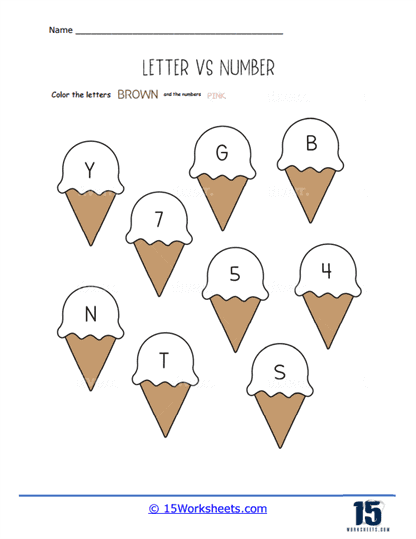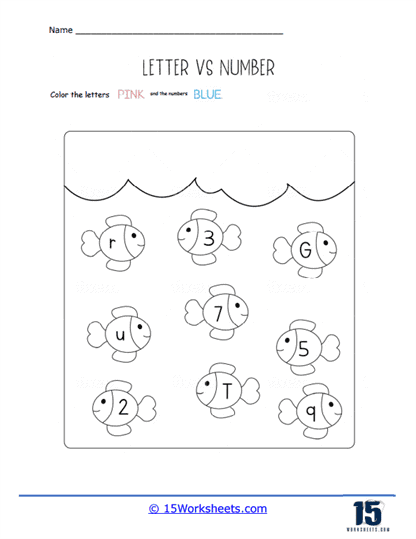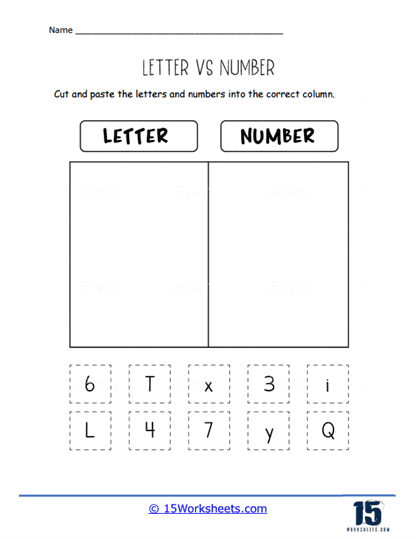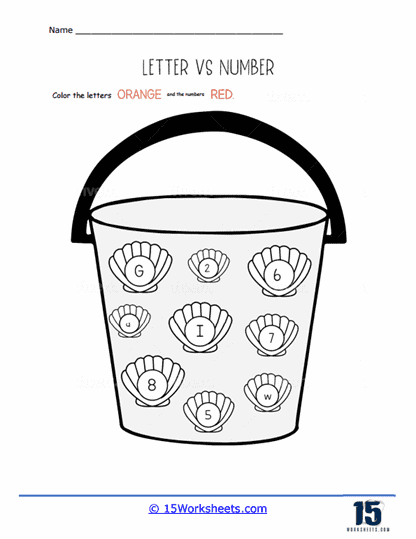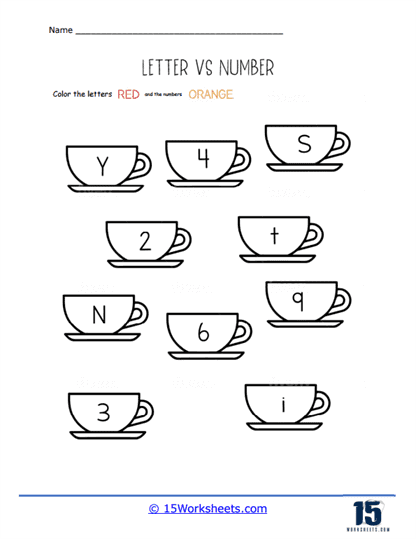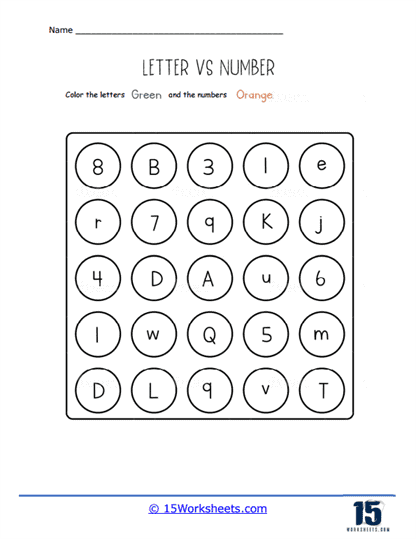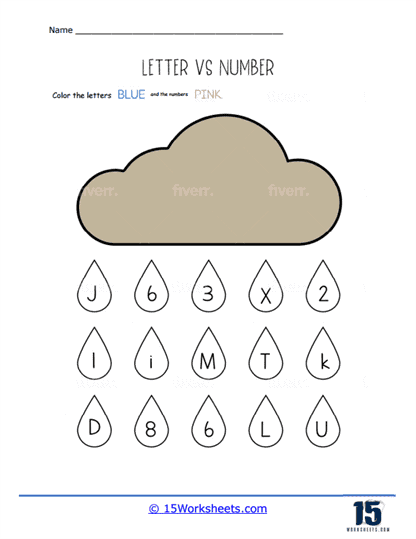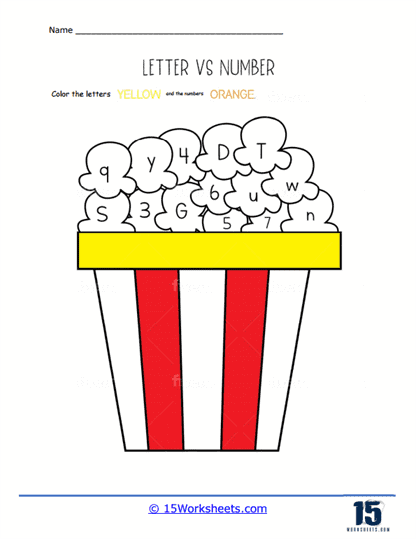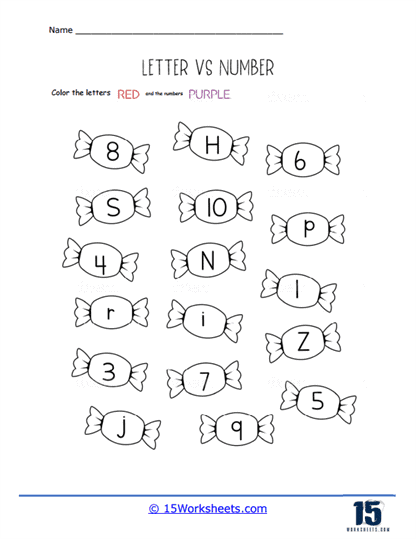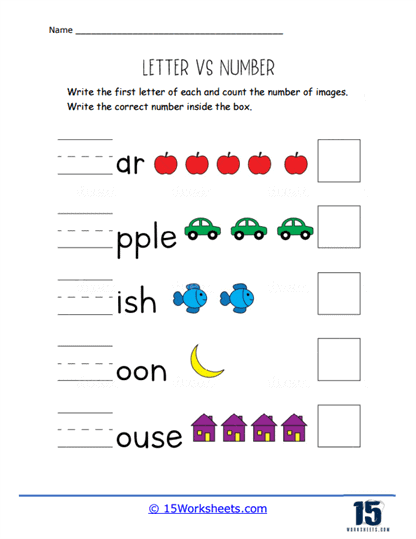Letters vs. Numbers Worksheets
About These 15 Worksheets
Letters vs. Numbers worksheets are designed to help children differentiate between letters and numbers, reinforcing their recognition and understanding of both. They feature a mixture of letters and numbers, and the child’s task is to identify and sort or categorize them accordingly.
Letters vs. Numbers worksheets offer several benefits for children:
Recognition – By distinguishing between letters and numbers, children practice recognizing and identifying both, reinforcing their early literacy and numeracy skills.
Classification – These worksheets help children develop their classification skills, a critical aspect of logical thinking and problem-solving.
Visual Discrimination – Children must visually discriminate between the shapes and forms of letters and numbers, improving their attention to detail and visual perception skills.
Fine Motor Skills – If the worksheets requires children to write, color, or circle the letters and numbers, they also practice their fine motor skills and hand-eye coordination.
Foundation for Learning – Recognizing the difference between letters and numbers is essential for children as they begin to learn reading, writing, and arithmetic.
These worksheets can be adapted for various age groups and difficulty levels, featuring simple letter-number combinations for younger children or more complex tasks for older children.
In addition to worksheets, teachers and parents can use activities such as sorting games, flashcards, or interactive digital activities to reinforce the concepts of letters and numbers and help children differentiate between them.
How To Teach This Concept
Teaching kids the difference between numbers and letters is essential for building a strong foundation in early literacy and numeracy skills. Here are some tips to help children differentiate between letters and numbers:
Introduce Letters and Numbers Separately – Start by teaching letters and numbers separately, focusing on each set individually. Use visual aids, such as flashcards or posters, to familiarize children with the shapes and forms of both letters and numbers.
Teach Letter and Number Formation – Guide children through the process of writing letters and numbers, emphasizing the unique formation of each. Encourage children to practice writing both sets to reinforce recognition and understanding.
Use Examples from Daily Life – Incorporate examples of letters and numbers from daily life, such as street signs, store signs, books, or digital devices. Point out the differences between the two and explain their functions in different contexts.
Play Sorting Games – Create activities where children sort or categorize letters and numbers. This can be done using manipulatives, flashcards, or even by drawing on a whiteboard or chalkboard.
Use Letters vs. Numbers Worksheets – Provide worksheets that require children to identify and differentiate between letters and numbers. Start with simple tasks and gradually increase complexity as they become more proficient.
Sing Songs and Use Rhymes – Teach children songs and rhymes that incorporate letters and numbers, helping them associate the different forms with their corresponding sounds or values.
Practice with Books – Choose books that focus on letters and numbers, and read them aloud with your child. Ask questions and engage in discussions about the differences between the two sets.
Encourage Creativity – Provide opportunities for children to create artwork, collages, or other projects that involve both letters and numbers. This allows them to explore the shapes and forms of both sets in a fun, creative way.
Be Patient and Consistent – Learning the difference between letters and numbers takes time and practice. Be patient and offer consistent reinforcement and encouragement as children work on mastering this skill.
Tailor Your Approach – Adapt your teaching methods to your child’s age, interests, and learning style. Some children may benefit from visual aids, while others may prefer hands-on activities or games.
By using these tips and incorporating a variety of activities, you can help children develop a solid understanding of the differences between letters and numbers, laying the groundwork for future success in reading, writing, and math.


